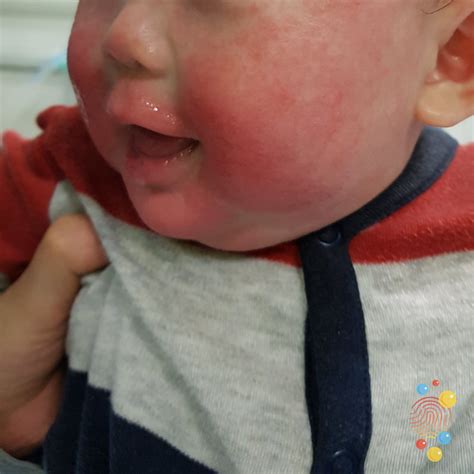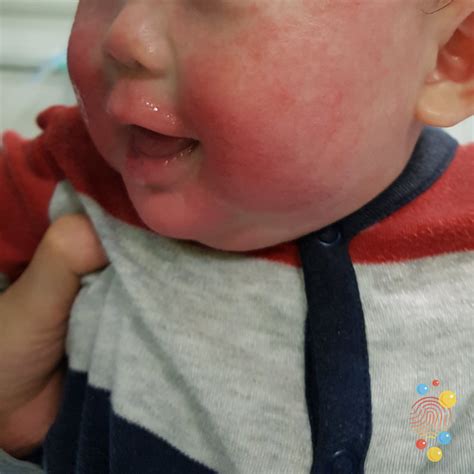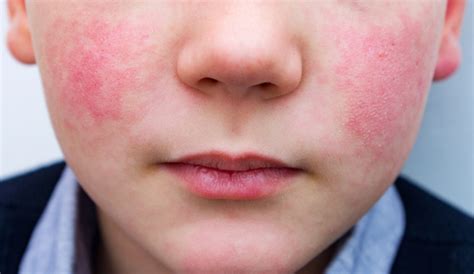Intro
Infant viral rashes are a common occurrence in babies and young children, causing concern and worry for parents and caregivers. These rashes can be caused by a variety of factors, including viral infections, allergies, and environmental factors. It is essential to understand the different types of infant viral rashes, their symptoms, and treatment options to provide the best possible care for affected infants.
Viral rashes in infants can be highly contagious, and it is crucial to take preventive measures to avoid the spread of infection. Good hygiene practices, such as frequent handwashing and proper cleaning of surfaces and toys, can help reduce the risk of transmission. Additionally, keeping the infant's environment clean and well-ventilated can also help prevent the spread of infection.
Infant viral rashes can be distressing for both the infant and the parents. The rash can cause discomfort, itching, and pain, leading to irritability and fussiness in the infant. Moreover, the uncertainty and worry about the cause and treatment of the rash can be overwhelming for parents. Therefore, it is essential to seek medical attention if an infant develops a rash, especially if it is accompanied by other symptoms such as fever, vomiting, or diarrhea.
Types of Infant Viral Rashes

There are several types of infant viral rashes, each with distinct characteristics and symptoms. Some of the most common types of infant viral rashes include:
- Roseola: a common viral infection that causes a rash, fever, and irritability in infants
- Hand, foot, and mouth disease: a highly contagious viral infection that causes sores and a rash on the hands, feet, and mouth
- Chickenpox: a viral infection that causes a blister-like rash, fever, and itching
- Measles: a viral infection that causes a rash, fever, and cough
- Rubella: a viral infection that causes a rash, fever, and swollen lymph nodes
Symptoms and Treatment Options

The symptoms of infant viral rashes can vary depending on the underlying cause. Common symptoms include:
- Redness and inflammation of the skin
- Itching and discomfort
- Fever and chills
- Vomiting and diarrhea
- Irritability and fussiness
Treatment options for infant viral rashes depend on the underlying cause and severity of the symptoms. In most cases, treatment involves relieving symptoms and preventing complications. This can include:
- Over-the-counter medications to reduce fever and relieve pain
- Topical creams and ointments to soothe the skin and reduce itching
- Rest and hydration to help the infant recover from the infection
- Isolation to prevent the spread of infection to others
Causes and Risk Factors

Infant viral rashes can be caused by a variety of factors, including:
- Viral infections: such as roseola, hand, foot, and mouth disease, and chickenpox
- Allergies: to food, environmental factors, or skin care products
- Environmental factors: such as extreme temperatures, humidity, and exposure to irritants
- Genetic predisposition: some infants may be more susceptible to viral rashes due to their genetic makeup
Risk factors for infant viral rashes include:
- Age: infants under the age of 2 are more susceptible to viral rashes
- Weakened immune system: infants with weakened immune systems are more prone to viral infections
- Exposure to infected individuals: infants who are exposed to individuals with viral infections are at a higher risk of developing a rash
- Poor hygiene practices: failure to practice good hygiene can increase the risk of transmission
Prevention and Management

Preventing and managing infant viral rashes requires a combination of good hygiene practices, environmental modifications, and medical treatment. Some tips for preventing and managing infant viral rashes include:
- Practicing good hygiene: frequent handwashing, proper cleaning of surfaces and toys, and avoiding close contact with individuals who are sick
- Keeping the infant's environment clean and well-ventilated: reducing exposure to irritants and allergens
- Avoiding sharing personal items: such as towels, utensils, and drinking cups
- Getting vaccinated: against viral infections such as chickenpox and measles
- Seeking medical attention: if an infant develops a rash or other symptoms of a viral infection
Complications and Long-term Effects

In some cases, infant viral rashes can lead to complications and long-term effects. These can include:
- Secondary bacterial infections: such as impetigo or cellulitis
- Scarring: from severe rashes or scratching
- Allergic reactions: to medications or skin care products
- Neurological complications: such as seizures or encephalitis
It is essential to seek medical attention if an infant develops a rash or other symptoms of a viral infection, especially if they are accompanied by other symptoms such as fever, vomiting, or diarrhea.
Seeking Medical Attention

If an infant develops a rash or other symptoms of a viral infection, it is essential to seek medical attention. A healthcare provider can diagnose the underlying cause of the rash and provide guidance on treatment and management. In some cases, medical attention may be necessary to prevent complications and long-term effects.
Some signs that an infant may need medical attention include:
- Fever over 102°F (39°C)
- Vomiting or diarrhea
- Difficulty breathing or swallowing
- Severe rash or blisters
- Irritability or fussiness
- Refusal to feed or drink
Conclusion and Next Steps

Infant viral rashes can be a concerning and overwhelming experience for parents and caregivers. However, by understanding the different types of rashes, their symptoms, and treatment options, it is possible to provide the best possible care for affected infants. If an infant develops a rash or other symptoms of a viral infection, it is essential to seek medical attention to prevent complications and long-term effects.
We invite you to share your thoughts and experiences with infant viral rashes in the comments section below. If you have any questions or concerns, please do not hesitate to reach out to us. Additionally, if you found this article helpful, please share it with others who may benefit from this information.
What are the most common types of infant viral rashes?
+The most common types of infant viral rashes include roseola, hand, foot, and mouth disease, chickenpox, measles, and rubella.
How can I prevent my infant from getting a viral rash?
+Preventing infant viral rashes requires a combination of good hygiene practices, environmental modifications, and medical treatment. This includes practicing good hygiene, keeping the infant's environment clean and well-ventilated, avoiding sharing personal items, and getting vaccinated against viral infections.
When should I seek medical attention for my infant's viral rash?
+It is essential to seek medical attention if an infant develops a rash or other symptoms of a viral infection, especially if they are accompanied by other symptoms such as fever, vomiting, or diarrhea. Additionally, if the infant is experiencing difficulty breathing or swallowing, has a severe rash or blisters, or is irritable or fussy, medical attention should be sought immediately.
